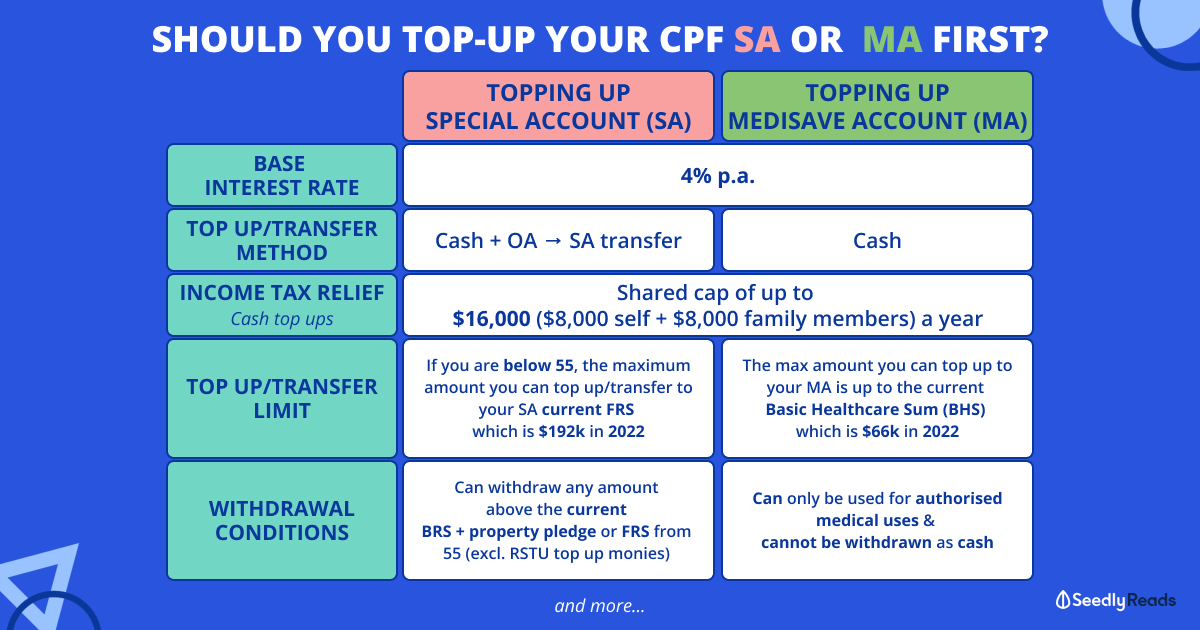Advertisement
Discussion (2)
Learn how to style your text
Shengshi Chiam, CFA
12 Mar 2020
Personal Finance Lead at Endowus
Reply
Save
Pang Zhe Liang
11 Mar 2020
Lead of Research & Solutions at Havend Pte Ltd
A transfer from CPF Ordinary Account to your CPF Special Account is a one-way traffic. In case you want to utilise your CPF Ordinary Account funds in the future, e.g. buy house, then this option may not be optimal.
By choosing to invest your CPF monies, you are giving up the guaranteed interest rate of up to 3.5% for your monies in your account. Instead, your returns are non-guaranteed. With this in mind, you have to be capable to do DIY investing or to work with an experienced consultant who is able to provide you with responsible financial advice. Furthermore, it is an additional benefit to get professional and independent advice from global investment firms like Mercer, and BlackRock.
Either way, there are pros and cons associated with your choice. The key thing is to spend quality time to find out how you want to plan for your future. Then seek professional advice to help you evaluate and make your choice.
Here is everything about me and what I do best.
Reply
Save
Write your thoughts
Related Articles
Related Posts
Related Products

Endowus
4.7
656 Reviews
Endowus Cash Investments Portfolio
Equities, Bonds
INSTRUMENTS
0.25% to 0.60%
ANNUAL MANAGEMENT FEE
$1,000
MINIMUM INVESTMENT
N/A
EXPECTED ANNUAL RETURN
Web and Mobile App
PLATFORMS
Related Posts
Advertisement








Hi Anon!
There is an analogy that I would make to help explain this better.
I always see doing the OA to SA transfer as buying a very good savings plan. How is this so?
Your money is locked in, and you cannot do anything about it. CPF SA cannot be withdrawn until 55
You get a high return for it, much higher than any savings plan you can get outside. Existing 4% or even the benchmark which CPF SA is using, is definitely more attractive than any savings plan
In contrast, investing your CPF OA monies is somewhat just like investing cash. How so?
You get a return based on your asset allocation. Our CPF 100% equities portfolio over a long period of time yield 7+% returns.
There is no penalty fee from withdrawal, unlike a savings plan
You can always sell your investments and use the proceeds for other purposes. In this case, you can liquidate your CPF investments and use the proceeds for your loved one education, housing.
Is an “investment” (investing CPF OA into equities) necessarily better than buying a very good savings plan?
I think it really depends on the emotional stability and the level of conviction of the decision maker here. If you are an extremely emotional investor, with a tendency to time the market, and get very worried about market volatility, getting a very good savings plan (OA to SA transfer) may work best for you. That being said I think you should try to learn how to invest more consistently using your cash, and eventually be able to invest better.
If you know the risk and volatility of the investments you are getting yourself into (Endowus give very detailed projection charts of the range of returns), and are aware that enduring and staying invested is part of the process of getting higher returns, then you probably should try to start investing your CPF.
That said, I think someone who is young should consider your short and midterm housing requirements before you do the CPF OA to SA transfer. At a younger age, there are more moving parts in our life – wanting to get our first/second home, paying for younger sibling tertiary education. While it is good that we try to use CPF SA as a long term, high yield account, we have to manage our CPF cashflows carefully, especially if we do not have much cash at hand. Also, if you choose to invest at a younger age, then your investment horizon is longer, you are more likely to get average returns over a longer period of time.
Hope this helps!